Discover 10 hidden attractions, cool sights, and unusual things to do in Altamura (Italy). Don't miss out on these must-see attractions: Piazza Duomo, Altamura Cathedral, and Porta Bari. Also, be sure to include Megalithic Walls of Altamura in your itinerary.
Below, you can find the list of the most amazing places you should visit in Altamura (Apulia).
Table of Contents
Piazza Duomo

Piazza del Duomo is the main square of the city of Altamura, Italy. It is located in the center of the historic city center, as well as in the middle of the main street of the city, that is corso Federico II di Svevia. Moreover, Altamura Cathedral, the main church of the city, is located on the square. It is also known because the Tree of Liberty was planted in this square during the so-called Altamuran Revolution.[1]
Altamura Cathedral

Also known as: Cattedrale di Santa Maria Assunta
Cathedral in Altamura, Italy. Altamura Cathedral, dedicated to the Assumption of the Blessed Virgin Mary, is a Roman Catholic cathedral in the city of Altamura, in the Metropolitan City of Bari, Apulia, in southern Italy.
Since 1986 it has been the seat of the Bishop of Altamura-Gravina-Acquaviva delle Fonti, formed in that year. Previously it was the church of the territorial prelature of Altamura (from 1848, Altamura e Acquviva delle Fonti).[2]
Address: Corso Federico II di Svevia, 70022 Altamura
Porta Bari
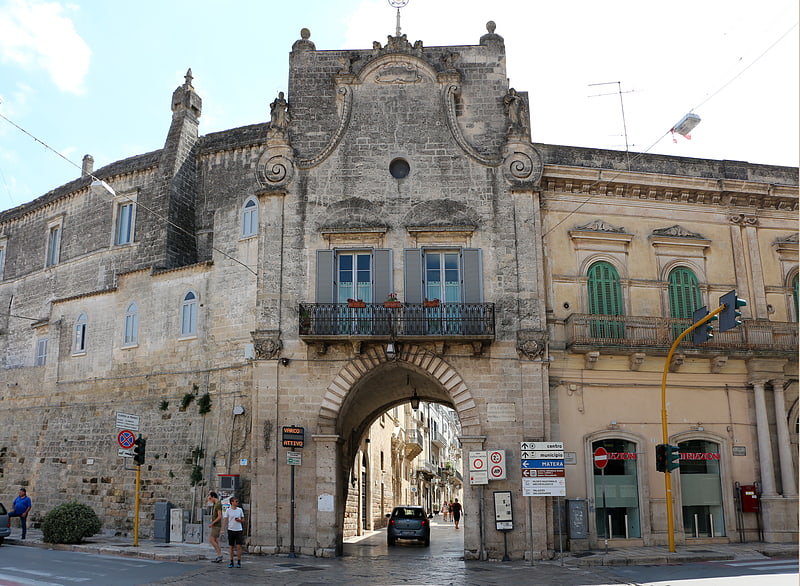
Porta Bari, previously called Porta de Bari, was one of the main gates of the city of Altamura, before the city walls of the city were torn down over the 19th century. Similarly to most European cities, the city walls were torn down, because the new technology and military techniques employed starting from the 19th century made them useless for defense purposes.[3]
Megalithic Walls of Altamura
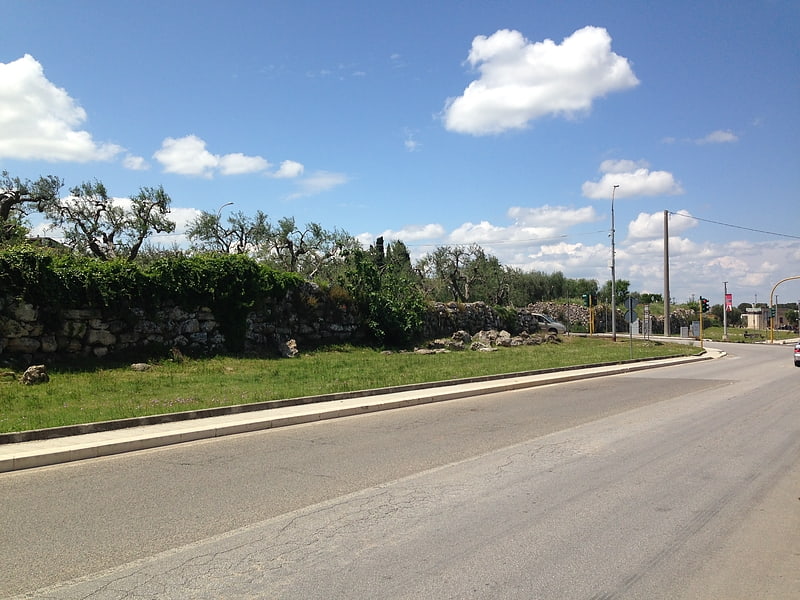
The Megalithic Walls of Altamura are defensive walls dating back to the 4th century BCE. They were the city walls of the ancient city of Altamura, Italy. Nowadays, only a few parts of the original wall remain; the original track of the wall spanned over a length of about 3.6 km. They were about 4 meters high, while the base of the walls was about 5 meters wide.
The megalithic walls are often confused with the city walls of today's Altamura historic center, of which fragments remain today in some parts as well. The two walls refer to different time periods and to different parts of the city: the megalithic walls refer to the ancient city, which was later abandoned or sacked, while the walls of Altamura historic center refer to the period starting from the founding of Altamura by king Frederick II of Hohenstaufen (13th century AD).[4]
Altamura Cemetery
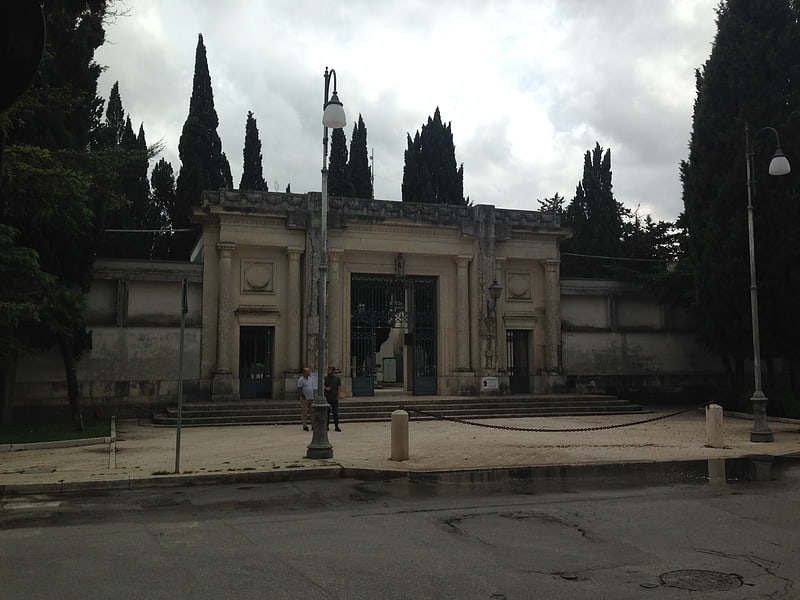
Cemetery in Altamura, Italy. Altamura Cemetery in Italy was established in 1942 and is still in use. It replaced the previous cemetery, which is inside the new cemetery. The area of the old cemetery is called il cimitero vecchio. The design of the entrance of Altamura Cemetery was based on the drawings of another design made by engineer Alberto Gennarini in the early years of the 20th century.[5]
Porta Matera
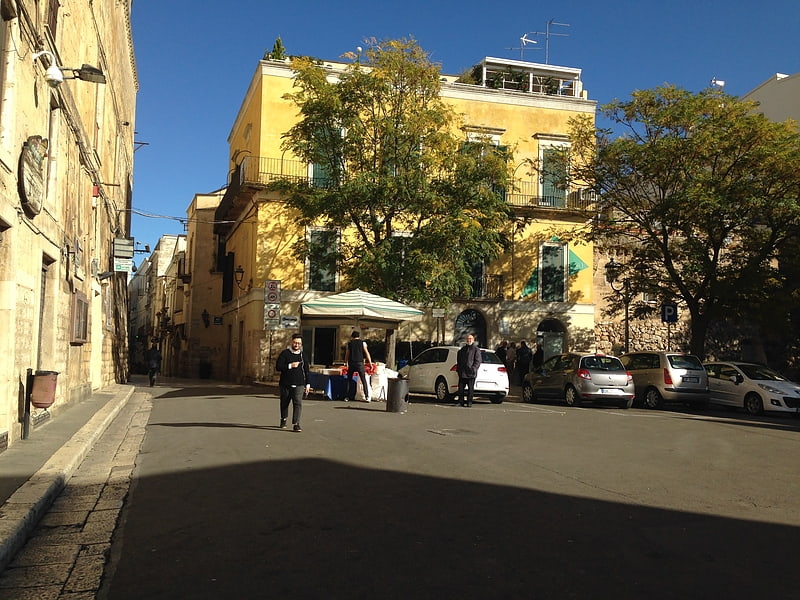
Porta Matera was one of the main gates of the old city of Altamura. They were part of the City Walls of Altamura, which were completely demolished during the nineteenth century since they had become useless for defence purposes. The gate itself was demolished in 1872. The monastery Monastero del Soccorso is located on the left side of the gate, while on the right some ruins of the city walls can be seen, presumably saved from destruction because of the bas-relief depicting "Pipino's leg".
In the past, it was known as porta montium, which is Latin and it means "the gate that leads to the mountains" of Italian region Basilicata. Nowadays, the gate is known mostly because of the Altamuran Revolution (1799).[6]
Archaeological Museum
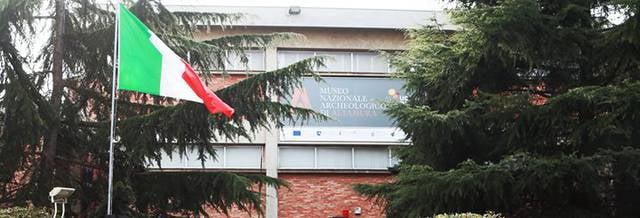
Also known as: Museo Archeologico
History museum, Museum
Address: Via Santeramo 88, 70022 Altamura
Epitaph of Altamura
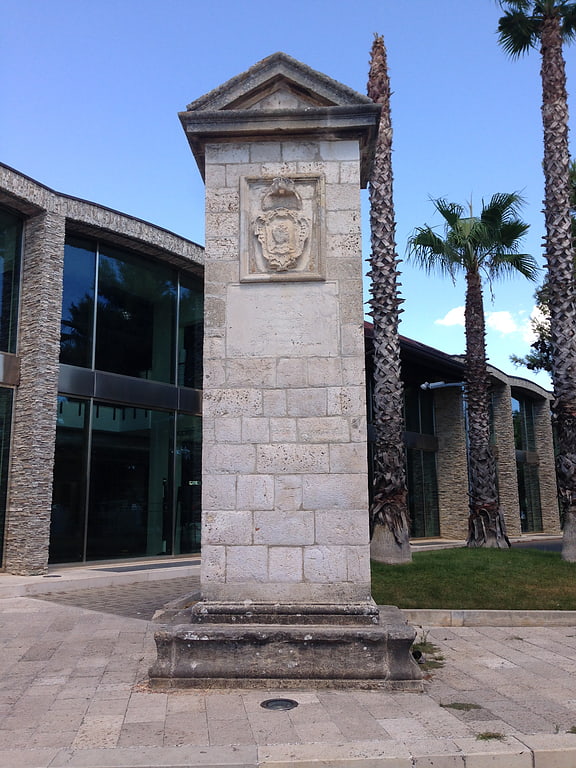
The Epitaph of Altamura is a monument located in Altamura, Southern Italy, erected right after the visit in city, on 8 April 1807, of Joseph Bonaparte, who had just become king of Naples. The commemorative epitaph is located in largo Epitaffio. Although traditionally named epitaph, it is not a funerary inscription but a commemorative monument.[7]
City Walls of Altamura
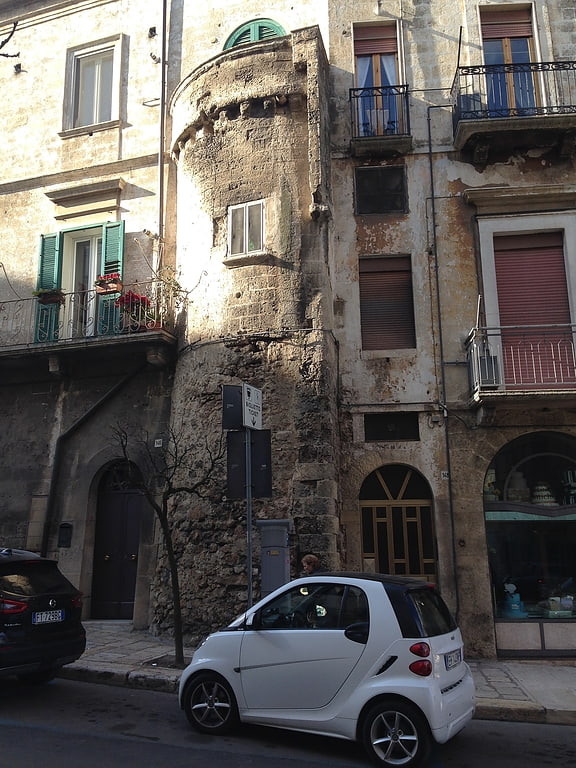
The City Walls of Altamura were a military structure meant for defensive purposes and located in the city of Altamura, Italy. Its origin dates back to the Middle Ages and it was in use until the 19th century when it started to be gradually torn down. Nowadays only a few isolated parts of the walls survive. It shouldn't be confused with the Megalithic Walls of Altamura, which date back to the 5th–4th century BC and intersect in some parts with the city walls.
Just a few maps depicting the city walls still survive and they are part of the maps Carte Rocca, commissioned by Angelo Rocca (drawings P/32 and P/33) and dating back to the end of the 16th century. Drawings dating back to earlier periods didn't survive.[8]
Pulo di Altamura

Historical landmark in Italy. Pulo di Altamura is a doline located on the Murge plateau. It is the largest doline in that region and it is located about 6 kilometers north-west of the city of Altamura. It shares the local toponym pulo with other large dolines of the region, i.e. Pulicchio di Gravina, Pulo di Molfetta and Pulicchio di Toritto.[9]